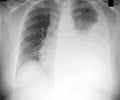The ESC Guidelines throw light on a new sudden death predictor for patients with hypertrophic cardiomyopathy.

The "2014 ESC Guidelines on Diagnosis and Management of Hypertrophic Cardiomyopathy" are published today on-line in the European Heart Journal (1) and on the ESC Website. Previous ESC Guidelines on hypertrophic cardiomyopathy were published in 2003 (2).
Professor Elliott said: "One of the most important innovations in this guideline is a new risk calculator that uses simple clinical measures to estimate five year risk of sudden cardiac death. This estimate is then used to stratify patients into high, intermediate and low risk categories that can be used to guide the use of ICDs."
He added: "These recommendations are likely to spark considerable interest and debate as they provide advice based on real estimates of risk rather than relative risks as in all previous guidelines. This will bring into focus the balance between clinical efficacy on the one hand and on the other, the potential risks and costs of therapy to individual patients and healthcare economies."
Professor Elliott continued: "In some aspects of the guidelines we had to balance an ideal of best practice with the realities of healthcare provision across Europe and elsewhere. Nevertheless, we make a number of recommendations that will prove challenging in some countries with the deliberate aim of raising the general standard of care for all patients."
Examples include a recommendation for genetic testing in all patients with HCM when it is of relevance to the management of family members; greater use of specialised tests such as cardiac magnetic resonance imaging in everyday practice; and early referral to multidisciplinary teams with expertise in the diagnosis and management of HCM.
Advertisement
Professor Elliott said: "The aim is to improve the accuracy of diagnosis and the management of patients and families with HCM. The role of expert counselling before and after genetic analysis is strongly emphasised and we provide clear guidance on the management of family members in different clinical scenarios based on the results of genetic testing."
Advertisement
Left ventricular outflow tract obstruction is a common feature of HCM that can be treated with drugs or invasive therapies such as surgery and alcohol septal ablation. For the first time, the guidelines present a systematic approach to the assessment of outflow tract obstruction that can be used to tailor therapies to the characteristics of individual patients. A simple guide is also provided for drug and device therapy in patients with HCM and heart failure.
Professor Elliott concluded: "We hope that these guidelines will enable healthcare professionals to raise the standard of care for patients of all ages with HCM by improving the accuracy of diagnosis and the use of a rational, patient centred approach to advice and clinical management."
Source-Eurekalert











